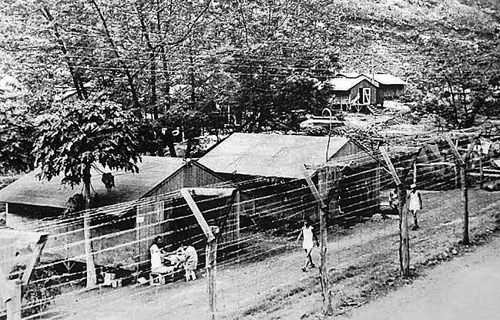Japanese Cultural Center gets $111K grant for internment education

A close-up of the Honouliuli camp.
The Japanese Cultural Center of Hawaii will be receiving $111,557 from the National Park Service to help educate the public about the Honouliuli Internment Camp on Oahu — one of 13 internment sites where Japanese-Americans were detained during World War II.
This is the latest in a series of National Park Service grants the center has received for the continued study and preservation of Honouliuli and other Hawaii camps. Past grants to the center include:
» $43,187 in 2009 to create a traveling exhibit to create awareness to increase public awareness.
» $117,626 in 2010 to produce an one-hour documentary film on the story of Hawaii internees.
» $38,565 in 2011 to hire and train guides to conduct tours of the Honouliuli Kunia site.
» $64,795 in 2012 for an educational program for high school students and teachers. The project will culminate with a public event in May 2014 featuring student projects.
Don't miss out on what's happening!
Stay in touch with breaking news, as it happens, conveniently in your email inbox. It's FREE!
U.S. Representative Colleen Hanabusa, whose grandfather was interned at Honouliuli, announced the park service grant, which will be used to develop a multimedia and virtual tour project of the camp.
Last year, Gov. Neil Abercrombie signed a Senate bill creating an advisory group to come up with recommendations for an educational resource center at the site of the former internment camp in Kunia where as many as 300 Japanese-Americans were interned.
Members of the advisory group include representatives from the Historic Preservation Division, UH-West Oahu, Japanese American Citizens League, Historic Hawaii Foundation and Monsanto Hawaii.
Monsanto Hawaii, a seed company, owns the land of the former internment camp site.
After Japan attacked the U.S. Pacific Fleet at Pearl Harbor in 1941, martial law was declared in the Territory of Hawaii.
Because the 160,000 Hawaiians of Japanese ancestry comprised almost 40 percent of the islands’ population and were vital to the economy, the wholesale incarceration of Japanese-Americans was neither feasible nor desirable.
In 1943, about 150 Japanese-Americans were relocated to Honouliuli from Sand Island. About 300 Japanese-Americans were interned at the camp along with residents of German and Italian descent. The sites were closed in 1945.
Honouliuli was the largest of the 13 internment sites in Hawaii during the war.
The camp was demolished after World War II. The remnants of two buildings are visible in Kunia.
The National Park Service is working on a two-year study of 13 Japanese internment sites in Hawaii under a federal law passed in 2009. A preliminary draft is expected to be ready later this summer.
The Hawaii internment camp sites include the Wailua County jail, Kalaheo stockade at Lihue Plantation, and Waimea jail on Kauai; the Honouliuli Gulch internment camp, U.S. Immigration Station, and Sand Island Detention Camp on Oahu; the Kaunakakai jail on Molokai; the Lanai City jail on Lanai; the Wailuku County jail and Kaiku Camp on Maui; and the Waiakea prison camp and Kilauea Military Camp on the island of Hawaii.
The Honouliuli facility was constructed specifically for the internment of civilians and to house prisoners of war.
The goal of the National Park resource study is to determine the best way to preserve the camps and tell their history.
Approximately 120,000 Japanese Americans, most of them United States citizens, were incarcerated on the mainland during World War II. The sites of the Manzanar, Minidoka and Tule Lake Internment Camps are now units of the National Park System.
This year marks the 25th anniversary of the Civil Liberties Act, signed in August 1988 by President Ronald Reagan, that acknowledged the federal government’s unjust actions against Japanese-Americans during World War II. Each surviving internee received a formal apology and $20,000 in restitution.




